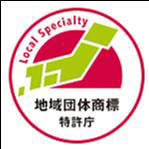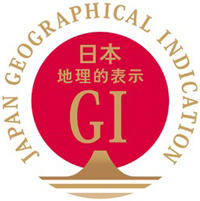Stollen, a Traditional Christmas Confection―The System Supporting the Quality of a Specialty Product (Part 2)
Osamu Magata
Professor, Faculty of Law, Chuo University
Area of Specialization: Criminal law
*Click here for the first half (1-3) of this article.
4. Protection of Regional Specialty Products in Japan
(1) In the previous segment, we looked at stollen, a German confection. For this segment, let's turn our attention to Japan.
Like Dresden stollen, Japan also has many regional specialty products, which are written using the name of the region followed by the name of the product. Examples include Odawara kamaboko[i], Soka senbei[ii], and Kyo-yuba[iii]. Many of you may have heard of all these products.

From the Japan Patent
Office website
These regional specialties are well-known and can be highly profitable if their names are used, so there is a risk that producers who have no affiliation with the specialty product may misappropriate their names. The system used to address this problem is the regional collective trademark system[iv]. This system has been in place since April 2006. Through the use of this system, if a product is registered as a regional collective trademark, legal action can be taken against those who use the trademark illegally. (A regional specialty product registered with the Japanese Patent Office as a regional collective trademark can be marked with a regional collective trademark seal. See the figure on the right.)
Today, the battle for trademark registration is unfolding on a global level. Many businesses and organizations are actively using this system to protect themselves from strategic trademark registration activities by cunning people. (The unauthorized use of another company's well-known registered trademark to boost the sales of one's own product is a "crime of infringement" under the Trademark Law[v], and is punishable by up to 10 years imprisonment and a fine of up to 10 million yen [Article 78]).
Furthermore, proper protection of the regional collective trademark will also lead to the recognition of the specialty product as a regional brand[vi]. If such products increase in number, they have the potential to strengthen local economies[vii].
(2) In this way, the regional collective trademark system is indispensable for the protection of regional brands. However, the goal of protecting local brands is difficult to achieve through this system alone. The regional collective trademark system does not require the submission of quality standards upon registration. For this reason, if the associations who own the trademarks do not take measures and make an effort to maintain the quality of the product, there may be undesirable differences in quality or even a decline in quality among vendors who have the same right to use the trademark. This can be viewed as a weakness of the regional collective system[viii].

From the Ministry of Agriculture, Forestry and Fisheries website
In terms of preserving quality, the geographical indication protection system mentioned in the discussion about Dresden stollen seems to be more dependable[ix]. This is because the quality standards must be included in the content of the registration in order to receive protection for a geographical indication. (If the registration is approved, the product can be sold with the GI (geographical indication) seal [see right]). In fact, Japan also adopted the geographical indication protection system in June 2015[x][xi]. The purpose of the system is to protect products whose quality and other characteristics are linked to the characteristics of the place of production[xii], and therefore, quality standards are a requirement for registration[xiii]. Comparing these systematic mechanisms, the geographical indication protection system is likely to be more effective than the regional collective trademark system in terms of the prevention of variation and decline in the quality of products[xiv].
Furthermore, the fact that quality standards are a requirement for registration further raises consumer expectations and confidence in the quality of the product. A high level of consumer expectation and confidence in turn encourages producers to make efforts to satisfy their customers[xv]. This positive feedback loop will further increase the potential for the preservation of quality, which in turn will increase the competitiveness of the product. In summary, the geographical indication protection system seems to be particularly valuable in that it has the ability to protect consumer confidence in the quality of products (which preserves quality and improves competitiveness)[xvi].
(3) Examples of geographical indications registered (and protected) under Japan's Geographical Indications Law include Kobe beef (No. 3), Yubari melon (No. 4), and Minowa somen (No. 12), with a total of 111 registered products as of October 2021[xvii].
Using Ryukyu moromi vinegar (No. 44) as an example, the following demonstrates (through excerpts) how the quality standards are specifically registered.
- All production processes must be carried out in Okinawa Prefecture.
- The raw ingredient used must be Ryukyu awamori moromi lees, which are produced through the distillation of Ryukyu awamori moromi.
- The products that can be sold are undiluted Ryukyu moromi vinegar or undiluted Ryukyu moromi vinegar with added fruit juice, and the undiluted Ryukyu moromi vinegar must make up 75% of the product weight or more, etc.
The knowledge that these essential production methods are registered may inspire a notable amount of confidence in the quality of the product.
5. Conclusion
The flavor of stollen gets better the longer you chew it. If you have not tried it, I highly recommend it. (However, if you do not like cinnamon or other spices, it may not be for you.)
As the author of this article, I hope that readers will take this opportunity to think about how such delicious flavors are preserved through various systematic mechanisms, and how Japan also has a functioning system to protect its products.
The significance and fascination around the legal system are quite familiar to me and I hope I have succeeded in sharing this feeling.
You should also know that there are products that have been cherished for many years in your hometown or region. You can search for them on the websites of the Japan Patent Office and the Ministry of Agriculture, Forestry and Fisheries (Regional Collective Trademark Search: https://www.jpo.go.jp/system/trademark/gaiyo/chidan/shoukai/index.html, Geographical Indication Protection Search: https://www.maff.go.jp/j/shokusan/gi_act/register/). It might be a wonderful opportunity for you to further deepen your love for your hometown and region.
References:
[i] Trademark Registration No. 5437575
[ii] Trademark Registration No. 5053366
[iii] Trademark Registration No. 5537636
[iv] Trademark Law, Article 7-2
[v] In addition, charges under the Unfair Competition Prevention Act may also be applied.
[vi] See Cabinet Office, "Local Economies 2017," Chapter 2, Section 2. https://www5.cao.go.jp/j-j/cr/cr17/chr17_02-02.html
[vii] Source: Japan Patent Office. https://www.jpo.go.jp/system/trademark/gaiyo/chidan/t_dantai_syouhyo.html
[viii] See also: Ryo Kohsaka, "Branding of Agricultural and Forestry Products and the Role of Intellectual Property: A Systematic Design of Regional Collective Trademarks and Geographical Indications," Patent Vol. 67, No. 8, pp. 23 ff.
[ix] Source: Kohsaka, note [viii] above, p. 24.
[x] The geographical indication protection system is based on the Agreement on Trade-Related Aspects of Intellectual Property Rights (TRIPS Agreement).
[xi] Act on Protection of the Names of Specific Agricultural, Forestry and Fishery Products and Foodstuffs (also known as the Geographical Indications Act or GI Act).
[xii] Ministry of Agriculture, Forestry and Fisheries. https://www.maff.go.jp/j/shokusan/gi_act/index.html
[xiii] Article 7, No. 5 and 6 of the Geographical Indications Act require the statement and submission of characteristics and method of production.
[xiv] Source: Kohsaka, note [viii] above, p. 24.
[xv] See also: Yoshihiro Masuda, "Strategic Application of Regional Collective Trademarks and Geographical Indications" Policy Research 52, p. 22.
[xvi] The regional collective trademark system may also help maintain confidence in business operators, which in turn may protect confidence in the quality of their products (see Article 1 of the Trademark Law). However, the level of protection of confidence in the quality of products is likely higher under the geographical indication system. (See also: Kohsaka, note [viii] above, p. 22.)
[xvii] https://www.maff.go.jp/j/shokusan/gi_act/register/
Osamu Magata
Professor, Faculty of Law, Chuo University
Area of Specialization: Criminal lawOsamu Magata was born in Tokyo in 1969. After graduating from the Faculty of Law, Chuo University, he obtained a doctoral degree in Criminal Law from the Graduate School of Law, Chuo University. After serving as an assistant professor at the Faculty of Law, Sapporo Gakuin University from 2003 and as an assistant professor at the Faculty of Law, Chuo University from 2005, he assumed his current position in 2010.
His research interests include re-examinations of complicity theory and preventive criminal law.
His research achievements include Kyohan no Honshitsu to Kabatsusei (The Essence and Criminal Liability of Complicity in a Crime) (single author), Keiho Enshu Subnote 210 Mon (210 Questions for Criminal Law Practice Subnotes) (co-authored), and Arrival of Singularity and Role of Criminal Law: Raising Issues, Hikakuho Zasshi (Comparative Law Review), Vol. 54, No. 4.









